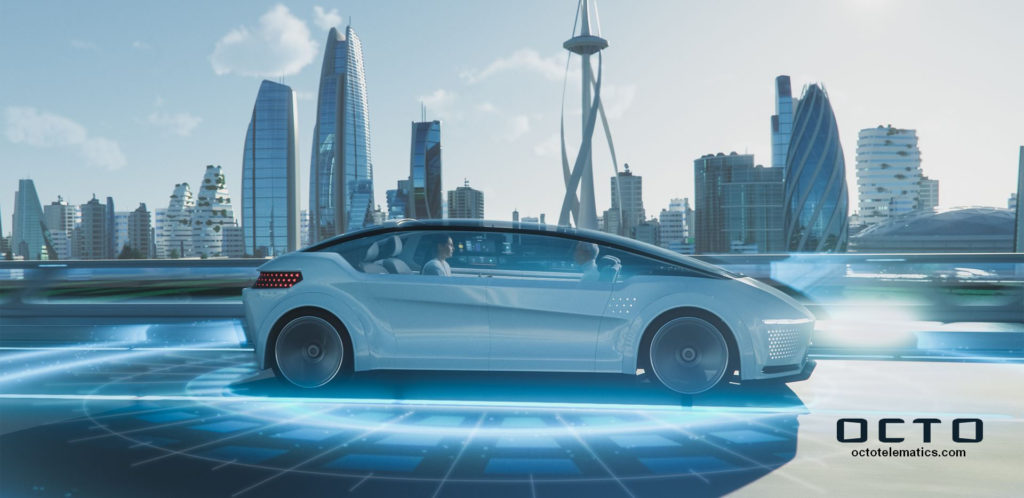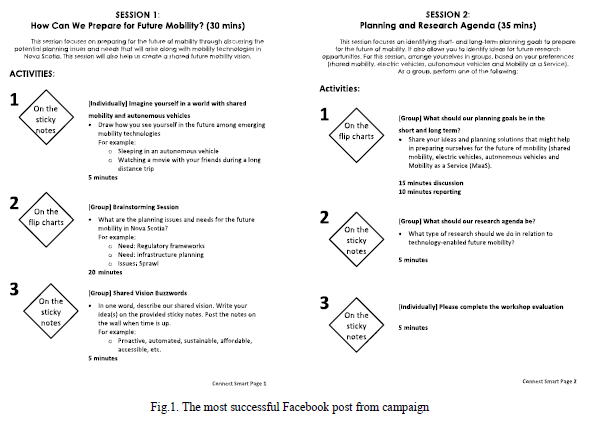A synopsis of practitioners’ perspective

On occasion of the 11th Conference on Ambient Systems, Networks and Technologies (ANT),on Abril 6-9, 2020, Warsaw, Poland, researchers Muhammad Ahsanul Habib and Rachel Lynn from Dalhousie University, Halifax, Canada, presented an article regarding planning for connected, autonomous and shared mobility. This article was published later by ScienceDirect and contributes to a growing discussion on how communities plan to prepare for new mobility opportunities offered by technological innovations, specifically shared mobility services, electric vehicles, connected and autonomous vehicles, and Mobility as a Service. In addition to that, the article stresses the importance of building awareness through social media campaign and website.
Planning
The researchers understand that technology-driven new mobility opportunities offer tremendous promises, as well as numerous challenges when planning for the future of transportation systems. While a few new mobility services have already penetrated the system, such as shared mobility, newer technologies, are gradually arriving on the market.
Existing literature in new mobility research is growing in terms of technology and operations, market adoptions and impact assessments. However, the authors highlight that, there is a clear gap in identifying how practitioners anticipate planning considerations and research needs to aid them in preparing for the needed changes in the transportation system. This study aims to fill this gap by taking a participatory approach in identifying planning considerations and research needs from the perspective of practicing planners, engineers and policymakers.
The transition from fuel powered vehicles to EVs is slowly occurring, as attitudes and preferences towards the technology changes. EVs are known for their environmental benefits.
The majority of literature examines environmental benefits and the growing adoption of EVs, although there is a lack of research on planning policy and regulation for the future of this mode choice.
On the other hand, connected and autonomous vehicles (CAV) are evoking increased optimism among transportation researchers. While there are many benefits associated with autonomous vehicles, such as improved traffic flow, reduced delays, reduced fuel consumption, and signal and freeway lane management, there are also many uncertainties in its evolution and market penetration.
As autonomous, electric and shared vehicle technologies are expected to experience a period of rapid growth, there is emerging research on the bundling of such technologies. Mobility as a Service (MaaS) is a new concept that is gaining recognition in the evolution of shared transport services. MaaS is categorized as a subscription-based service that integrates various mobility providers using a digital platform that allows users to purchase the service based on what plan best fits their needs. Through the bundling of services, there is an increased interconnection between transportation modes and a greater choice ability that allows users to take different kinds of transport that they may not usually travel on.
Method
The researchers stress that this study utilizes a qualitative research method to examine the issues and planning considerations for new mobility. The research team facilitated a focus group where planners, engineers, policymakers and community members engaged in identifying issues, planning considerations and a research agenda to plan for technology-based mobility opportunities. The study launched a social media awareness campaign as well as a dedicated website, called Connect Smart, which was hosted through the university portal. The purpose of this consorted effort is the development of a knowledge hub that shares research findings, resource reports, case studies and pilot projects. This initiative offered a general familiarity among practitioners, in relation to newer transportation technologies and concepts.
The study reached out to five categories of stakeholders: 1) transportation and land use planners, who are responsible for developing longer term strategic transport plans, transit operations and land use planning; 2) transportation and infrastructure engineers from traffic operations and infrastructure renewal; 3) government and public policy advisors who were drawn from provincial departments, including the Department of Energy, Department of Transportation and Infrastructure Renewal and the Department of Health and Well-Being; 4) private transport and parking operators who specifically manage parking facilities and shared mobility; and 5) non-profit community groups, including bicycle advocates, transit advocates and environmental advocacy groups.
Major issues concerning emerging technology-based mobility services include how municipalities and provinces will prepare for the impacts of such technologies through their regulations and policies. Stakeholders seemed largely concerned with safety and liability if an accident were to occur. The shift from human driving vehicles to CAV brings concerns about the repercussions on how the two modes of transportation will interact. Stakeholders are curious about the issues of human driving becoming illegal once there has been a full adoption of CAV. Lastly, there is a need for a regional strategy for the province that can prepare for the impact of emerging technologies and allow for adaption based on regional variances.
A second issue considered in this article is the need for planners to standardize a design for infrastructure that accommodates all modes of transportation. Stakeholders pointed out that planners and engineers need to consider how these new technologies will impact land uses in a city, primarily parking and its role in a city. Participants thought that with shared mobility services and autonomous vehicles gaining popularity, there would be a decrease in demand for street parking and parking lots. However, there will be an increased need for drop-off locations in front of buildings and entrances.
The participants identified planning considerations for all four categories of future mobility; shared mobility, EVs, autonomous vehicles, and Mobility as a Service. For shared mobility, there was a consensus that over the short-term, cities should raise awareness on shared mobility opportunities, including ride hailing and car share services.

The capabilities of the electric grid need to be assessed and understood as to whether charging EVs can be supported throughout the day. Stakeholders also discussed repurposing gas and fuel stations to accommodate electric charging stations. In conjunction with the previous goals, a consistent regulatory framework that considers all aspects of future mobility, including efficiency and safety, is necessary in planning. Over the long-term, cities should think about not only electrifying cars, but electrifying trains, bikes, and motorcycles, among others.
Due to the advanced technology and databases of autonomous vehicles, there must be effective regulations to ensure the privacy and protection of collected data. Specifically, regulations on who owns the data (private vs. public sector) and how it could be shared throughout different jurisdictions
The stakeholders identified MaaS as a new concept that will require developers to build residential and commercial buildings that have pick-up and drop-off zones. Through this new mode of travel, vehicles will be waiting for their passengers in the specified zones, rather than in parking lots, which allows for future land use planning considerations. Another topic of interest for stakeholders is how ride sharing services could become a monopoly of dominant players. As a result, planners need to consider the role of the government in this new era of mobility revolution and if the government should own its own network of vehicles.
Setting up the research agenda
The participants identified potential research agenda topics in relation to technology-enabling future mobility. In order to encourage shared mobility as a future main mode of transportation, the stakeholders want further research on how best to incentivize people to avoid personally owned vehicles.
The majority of topics for research in relation to connected and autonomous vehicles refer to how to maintain other modes of transportation when CAV prevails. Specifically, stakeholders believe further research is necessary on how to incentivize walking, as well as maintaining transit priority in a world of autonomous vehicles.
For Mobility as a Service, there is an urgent need for research into the feasibility and multiple components of this future mobility option. The most prominent topic for research discussed by stakeholders is the role of government in MaaS. Specifically, how can the government sponsor MaaS infrastructure and products.
In general, this article indicates that stakeholders are interested in exploring options and plans to mitigate future congestion at the local level following the arrival of mobility technologies, such as shared mobility and/or autonomous vehicles. Research should also look at predicting emission and energy use in relation to the adoption of new technology. Common research agenda topics include the impacts that emerging shared mobility options will have on land use and infrastructure. Other suggestions include mapping the built and social environment for future mobility hotspots and mapping the peak travel times to understand vehicle density throughout the day. It is evident that the stakeholders have a high demand for further research on the future of technology-based mobility options.
Discussion
Future research may investigate the research questions posed by the workshop participants. It would also be interesting to follow up with stakeholders to see if they have implemented what they learned in this workshop in their decision-making processes. The researchers explain that this study offers specific planning considerations for shared mobility, EVs, connected and autonomous vehicles, and Mobility as a Service. Most interestingly, practitioners put together an intriguing research agenda, signifying that further critical understanding is necessary before formulating short- term and long-term plans.